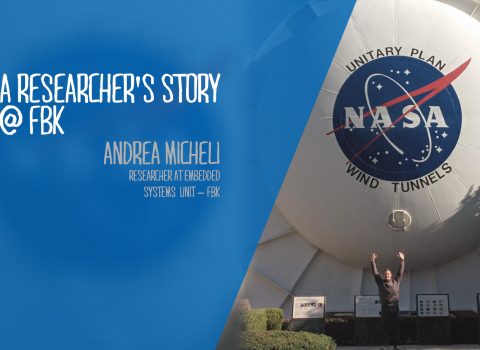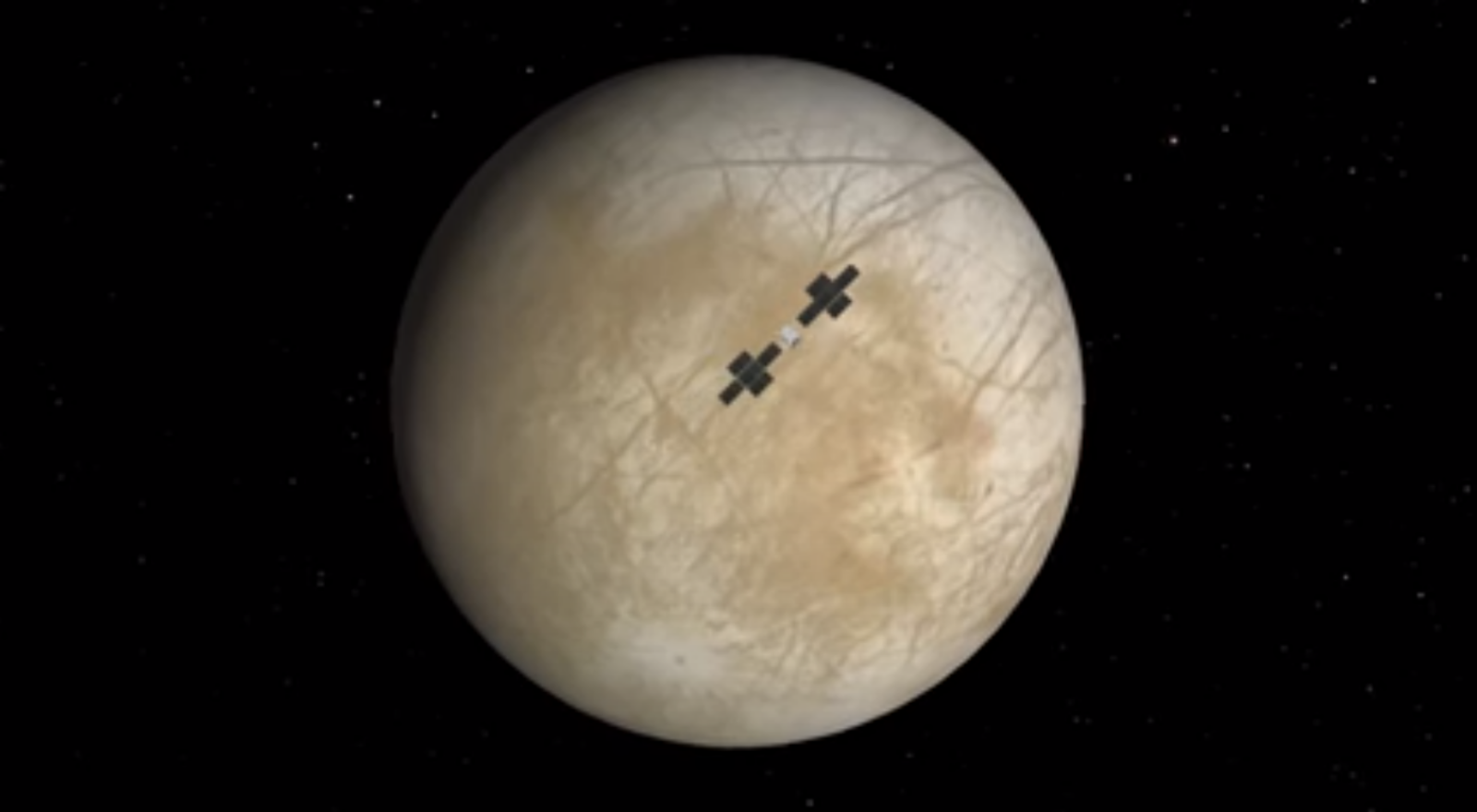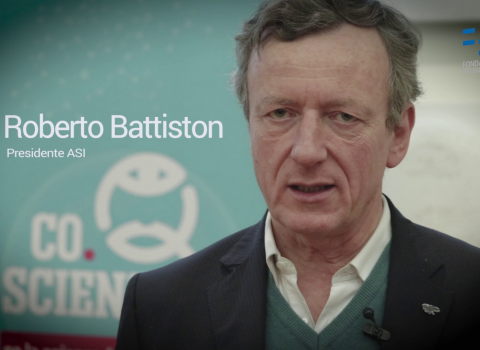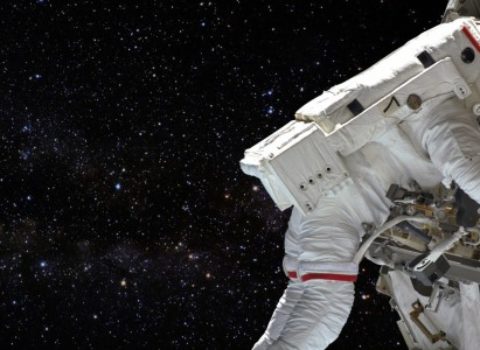
Destination: Ganymede
The European probe JUICE is set to be launched from Kourou Space Base in French Guiana in the second half of April. Mission goal: to reach Jupiter's orbit in seven years and study its icy moons. The Bruno Kessler Foundation (with the research group coordinated by Francesca Bovolo) is among the partners in the UniTrento-led project.
RIME (Radar for Icy Moon Exploration) is a subsurface radar optimized to penetrate the icy crust of Jupiter’s moons Europa, Ganymede and Callisto in search of water, a clue to possible life.
JUICE (Jupiter Icy Moon Explorer) is the first among the European Space Agency’s (ESA) major missions under the Cosmic Vision program. The space radar, on which many scientific expectations are focused, was designed and studied by a team of international scientists under the leadership of Lorenzo Bruzzone, a professor in the University of Trento Department of Engineering and Information Science (Disi). It is an instrument capable of paving the way for exceptional discoveries since for the first time it will make direct observations down to a depth of nine kilometers with a resolution of about thirty meters. The launch, scheduled for April, will also be followed live by FBK and the University of Trento.
RIME is one of the important instruments on board, funded and developed under the guidance of the Italian Space Agency (ASI). For ESA’s JUICE probe, ASI has fielded a great deal of collaboration with entities, industries and other national space agencies. The instruments were developed through a big collaboration effort of the national scientific community and of our industries but also through various international cooperation efforts on the use and sharing of scientific data between ASI and NASA‘s Jet Propulsion Laboratory (JPL), the German agency DLR, the French CNES and the Israeli space agency ISA.
JUICE will seek to study what the conditions for planet formation and appearance of life are and how the Solar System works. The comparative study of the three Jovian satellites in a single mission will provide insight into the causes of their diversity, which is dominated by Jupiter’s influence. JUICE’s main scientific topic concerns the possible habitability of giant planets environments. Surprising, unprecedented results are expected, which will strengthen the leadership role gained by Italy in many areas of planetary exploration.
Francesca Bovolo, head of the Remote Sensing for Digital Earth (RSDE) Research Unit at Fondazione Bruno Kessler’s Digital Society research center, will travel to Kourou, French Guiana, to attend the upcoming launch. The ESA project, which is labeled “large mission,” represents a huge challenge: it has required more than a dozen years of research to prepare the necessary instruments, seven more will be needed to reach the Jupiter system, and, starting in 2030, for three years, it will be possible to make direct measurements of the subsurface of icy moons for the first time.
With decades of experience in satellite survey studies, the working group coordinated by the FBK researcher will focus on automated processing of data acquired by the RIME Space Radar. This is an active instrument that emits a signal with a frequency of 9MHz that can penetrate under the ice surface up to nine kilometers, ans sometimes up to twenty – depending on the mechanical/dielectric properties of the observed material.
When the signal emitted by the radar reaches the moons surface, it is partly reflected and partly transmitted to the sub-surface where it undergoes further reflections/transmissions. Analysis of the data obtained makes it possible to identify discontinuities that are clues to characterizing geological processes: this is how we gradually “explore” the planets layer by layer. Each layer has different characteristics, bearing witness to the geological history hidden beneath the surface. The mission will answer many open questions. Is there an ocean under the icy crust? At what depth? If the presence of water is confirmed, can Jupiter’s moons ever be colonized?
FBK will provide the mission with a set of algorithms to conduct automated data analysis (information extraction). From this data, it will be possible to derive a representative segmentation map of relevant features, the so-called interfaces where changes in properties from one layer to another are recorded. Similar studies have been conducted before with other ad hoc tools; there are similar data on the Arctic and Antarctica acquired from airplane-mounted sensors, which are more unstable than a satellite orbit, as well as images of Mars. For the first time we will go as far as Jupiter.
Thanks to the next-generation solutions and technologies resulting from the project, there will be numerous and unprecedented spin-offs of the space mission on Earth as well, primarily for industries but not only so. One example of the complexity involved is the process of building the instruments themselves, with the associated very long lists of technical requirements to be met. Such instruments, in order to meet their intended scientific goals, must meet extremely demanding constraints, and this implies constant coordination among project stakeholders to gradually align instrument design with the scientific framework. It is by virtue of these iterations and interactions, a web of collective intelligence on a global scale, that the extreme, at the limits of the thinkable, becomes first possible and finally measurable. To follow the launch of the space probe, don’t miss upcoming updates. Congratulations to Francesca and her entire team!
The entities and universities that make up the scientific teams for the 4 instruments with Italian contribution are: IAPS/INAF, University of Trento, Sapienza University of Rome, University of Rome 3, Fondazione Bruno Kessler (FBK), University of Bologna, Astronomical Observatory of Abruzzo (OAAB)/INAF, University of Tor Vergata-Rome, Geosciences and Georisources Institute (IGG) of CNR, Partenope University of Naples, Astronomical Observatory of Padua (OAPD)/INAF, CISAS – University of Padua, Polytechnic University of Milan, University of Salento. On the industrial side, the realization of the instruments sees the involvement of both Thales Alenia Space and Leonardo. Leonardo also provided the hyper-spectral optical head to observe and characterize clouds, ice and minerals on the surfaces of the three moons. Also from Leonardo come JUICE’s solar panels, the largest ever made for an interplanetary mission.
Cover photo: cropped frame from Juice Space project video.




